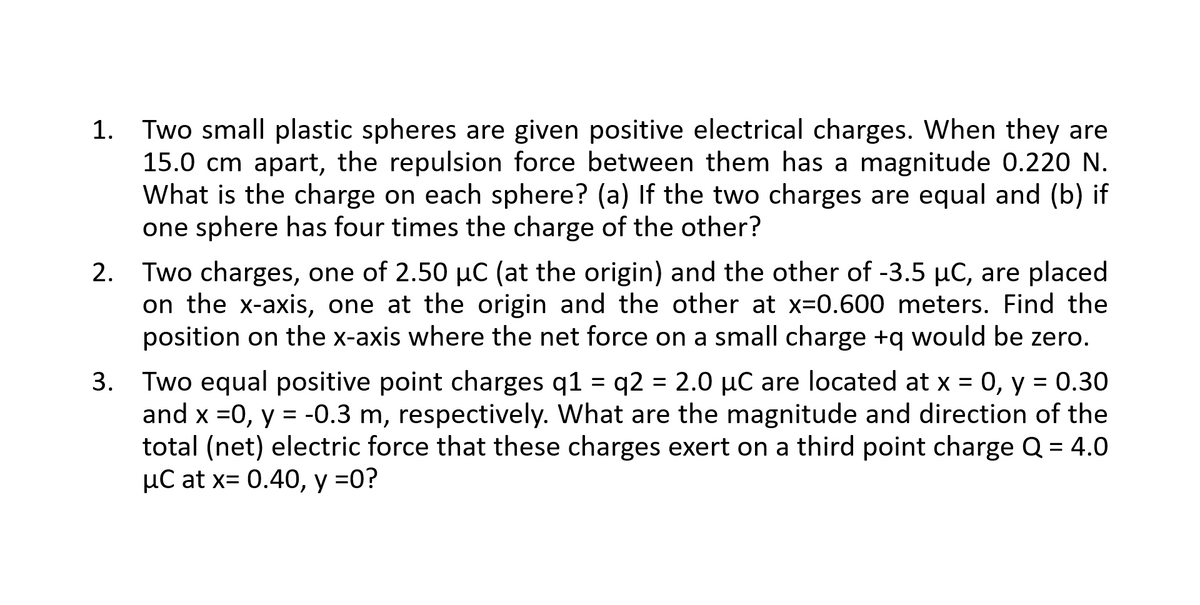Two small plastic spheres are given positive electrical charges. When they are 15.0 cm apart, the repulsion force between them has a magnitude 0.220 N. What is the charge on each sphere? (a) If the two charges are equal and (b) if one sphere has four times the charge of the other? 1.
Two small plastic spheres are given positive electrical charges. When they are 15.0 cm apart, the repulsion force between them has a magnitude 0.220 N. What is the charge on each sphere? (a) If the two charges are equal and (b) if one sphere has four times the charge of the other? 1.
Sustainable Energy
2nd Edition
ISBN:9781337551663
Author:DUNLAP, Richard A.
Publisher:DUNLAP, Richard A.
Chapter18: Energy Storage
Section: Chapter Questions
Problem 16P
Related questions
Question

Transcribed Image Text:1. Two small plastic spheres are given positive electrical charges. When they are
15.0 cm apart, the repulsion force between them has a magnitude 0.220 N.
What is the charge on each sphere? (a) If the two charges are equal and (b) if
one sphere has four times the charge of the other?
2. Two charges, one of 2.50 µC (at the origin) and the other of -3.5 µC, are placed
on the x-axis, one at the origin and the other at x=0.600 meters. Find the
position on the x-axis where the net force on a small charge +q would be zero.
= q2 = 2.0 µC are located at x = 0, y = 0.30
3. Two equal positive point charges q1
and x =0, y = -0.3 m, respectively. What are the magnitude and direction of the
total (net) electric force that these charges exert on a third point charge Q = 4.0
µC at x= 0.40, y =0?
Expert Solution
This question has been solved!
Explore an expertly crafted, step-by-step solution for a thorough understanding of key concepts.
This is a popular solution!
Trending now
This is a popular solution!
Step by step
Solved in 2 steps with 2 images

Knowledge Booster
Learn more about
Need a deep-dive on the concept behind this application? Look no further. Learn more about this topic, civil-engineering and related others by exploring similar questions and additional content below.Recommended textbooks for you

